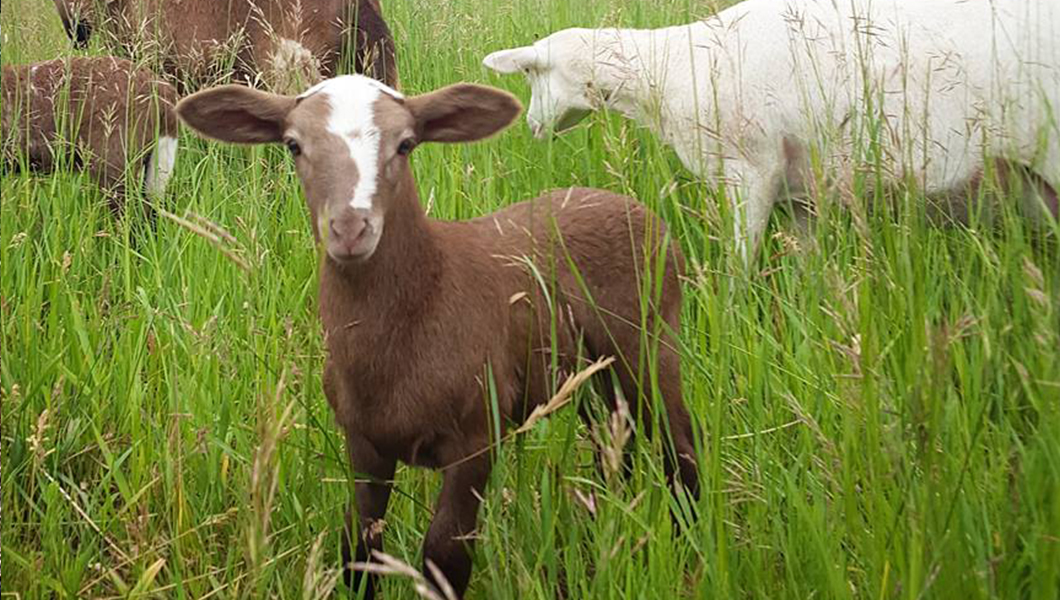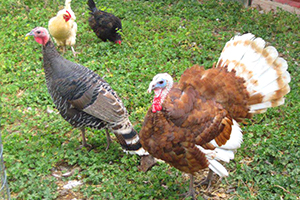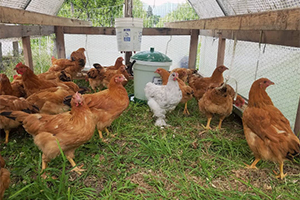Integrated Livestock in Fruit and Vegetable Production
Livestock have been integrated into crop production systems for much of agriculture’s history, providing fertility, weed and pest control, and residue breakdown. Livestock can also provide an additional revenue stream for farmers, creating cash flow year round or providing income in the years before a perennial crop starts producing. Livestock, however, can also introduce sources of contamination, creating food safety concerns, especially for farmers growing crops that are eaten fresh, like many fruits and vegetables. Other challenges for integrated systems include crop and infrastructure damage, as well as livestock predation.
Research Impact Statement
WARC’s Integrated Livestock research and education project investigated the effects of livestock grazing on food safety, weed control, and soil health for fruit and vegetable farms. Through research trials and producer input, we compiled applicable information to guide Montana farmers in making low-risk and profitable decisions about integrated management systems. We hope to continue helping Montana fruit and vegetable producers access market opportunities, improve farm efficiency, and diversify enterprises to better weather the challenges of modern agriculture.
Browse the links below for information on the following topics related to this research:
Research Summary
Field research began in spring 2019 and was completed in fall 2021, providing three seasons of data exploring the impacts of integrated livestock on soil health, weed and pest pressure, crop production, and food safety within orchard production systems. We replicated the study with poultry and sheep within one vineyard and three distinct orchard systems: a mature dessert apple orchard (grazed in the late spring); a mature cider apple orchard (grazed in the early fall); and a high-density cider apple orchard (grazed in mid-summer). Livestock were removed from the mature dessert and cider apple orchards more than 90 days before harvest to minimize the risk of manure contaminating fruit. Within the high-density orchard, livestock presence and manure pose no food safety risk until the trees are old enough to bear fruit, so poultry were kept in that orchard until late in the growing season to maximize weed and pest control benefits.
We measured the effects of poultry and manure using spring soil testing, annual leaf tissue analysis, and pathogen testing during harvest season. Weed and pest counts in livestock and control plots were recorded multiple times over the course of each season to track pressure on the trees. Within the young cider orchard, trunk width and height are measured annually to track growth, death, and damage relative to treatment type. To provide growers with financial comparisons of integrated livestock and standard production practices, we recorded costs and revenues of the livestock enterprise to compare with expenses for the control plots. As we find trends over the three seasons of research, this information will help growers determine whether integrated livestock can offer savings in labor, input costs, or resource consumption within their production systems.
Conclusions are explored in more depth on each of the sub-pages listed above. Important takeaways include:
- Soil amendments from livestock manure compared favorably with conventional fertilizer and organic compost, demonstrating that integrated livestock can be a cost-effective management option for feeding crops. To obtain the optimal balance of soil nutrients, livestock stocking rate may need to be adjusted depending on site-specific nitrogen, phosphorus, and potassium needs.
- Potentially dangerous pathogens are present in raw manure and on the orchard floor after livestock grazing. Contamination of fresh-eaten fruits and vegetables from that manure presents producers with both health and liability risk. However, our data show that levels of harmful bacteria on the orchard floor drop drastically over the three weeks after livestock are removed. Ninety- and 120-days between livestock presence and crop harvest appear to be far longer intervals than are necessary for pathogen counts to return to pre-livestock levels. Factors that increase lifespan of harmful bacteria include wildlife presence, overhead (vs. drip) irrigation, and vegetated (vs. bare) soil. Pathogen testing in your unique cropping system is the optimal way to determine the safest interval between animals and harvest.
- Weed management varies drastically between species and breeds of livestock, and even between different individuals and ages of the same breed. Labor costs for proper animal management (especially managing fencing and water) are unlikely to be offset by weed reduction alone, as compared to alternative weed management strategies like mowing and spraying. However, if animals are providing adequate income and fertilization to cover their costs, weed management can be an additional benefit. Geese and sheep had the greatest impact on weeds, while broiler chickens and turkeys had the least impact.
- Managing livestock to avoid damage to apple trees and grapevines is an undeniable challenge that can be mitigated by grazing animals when crops are dormant or by fencing them only in the alleys between plants. However, these strategies reduce animal impact on weeds and are likely to increase labor costs. Allowing some damage to crops—for example letting sheep graze lower leaves on apple trees once per season—may be worth the other benefits of livestock in some production systems. In many cases, simply picking the most appropriate species and breed of livestock for your unique system is the best tool for minimizing crop damage.






